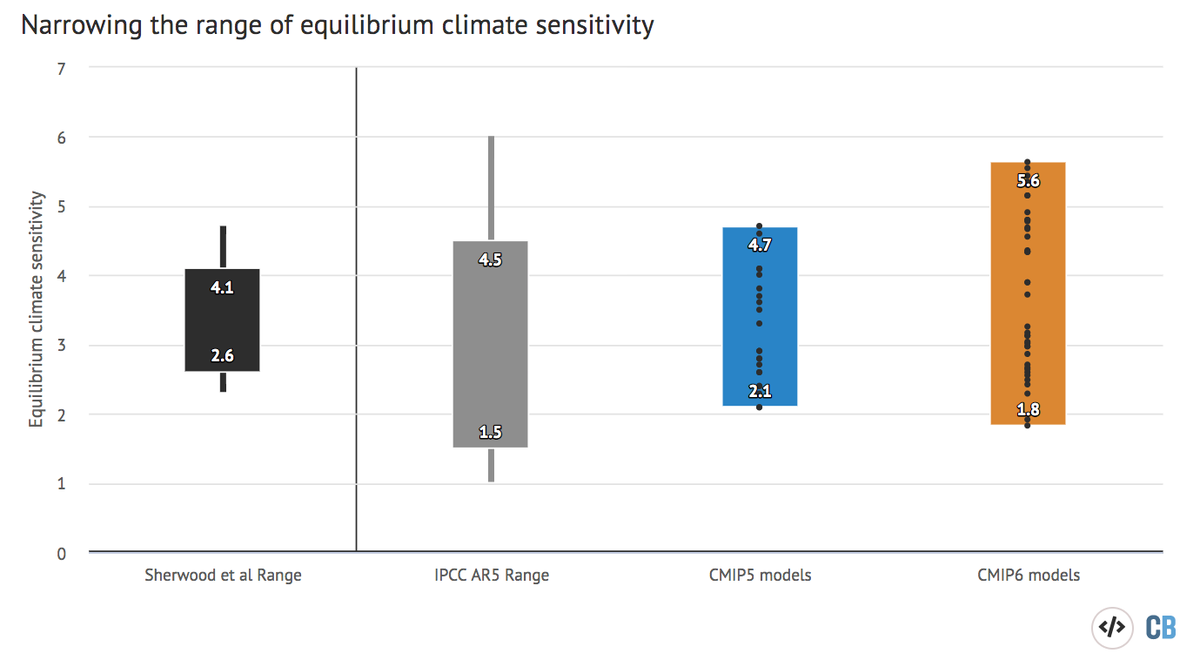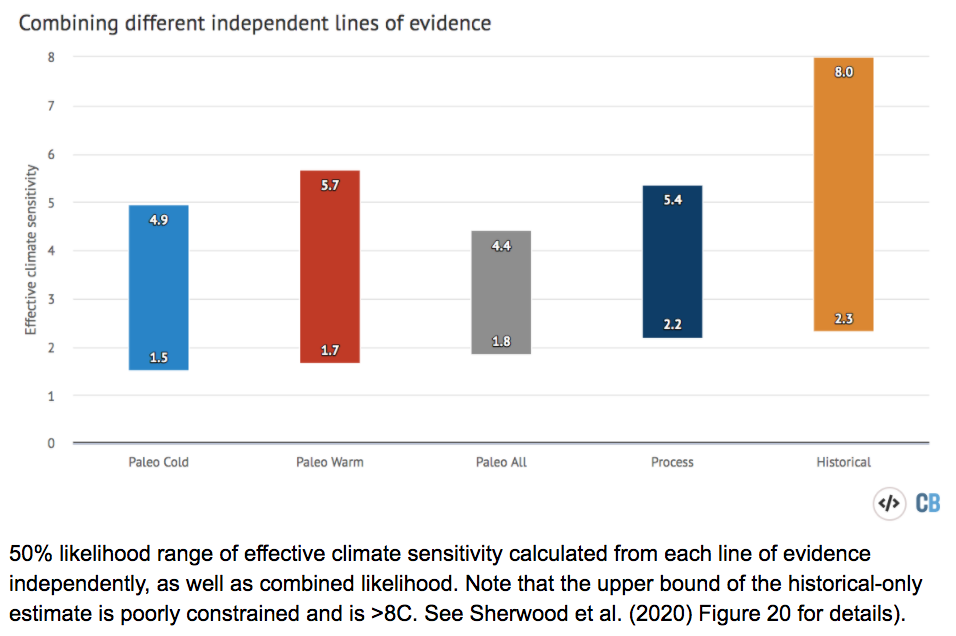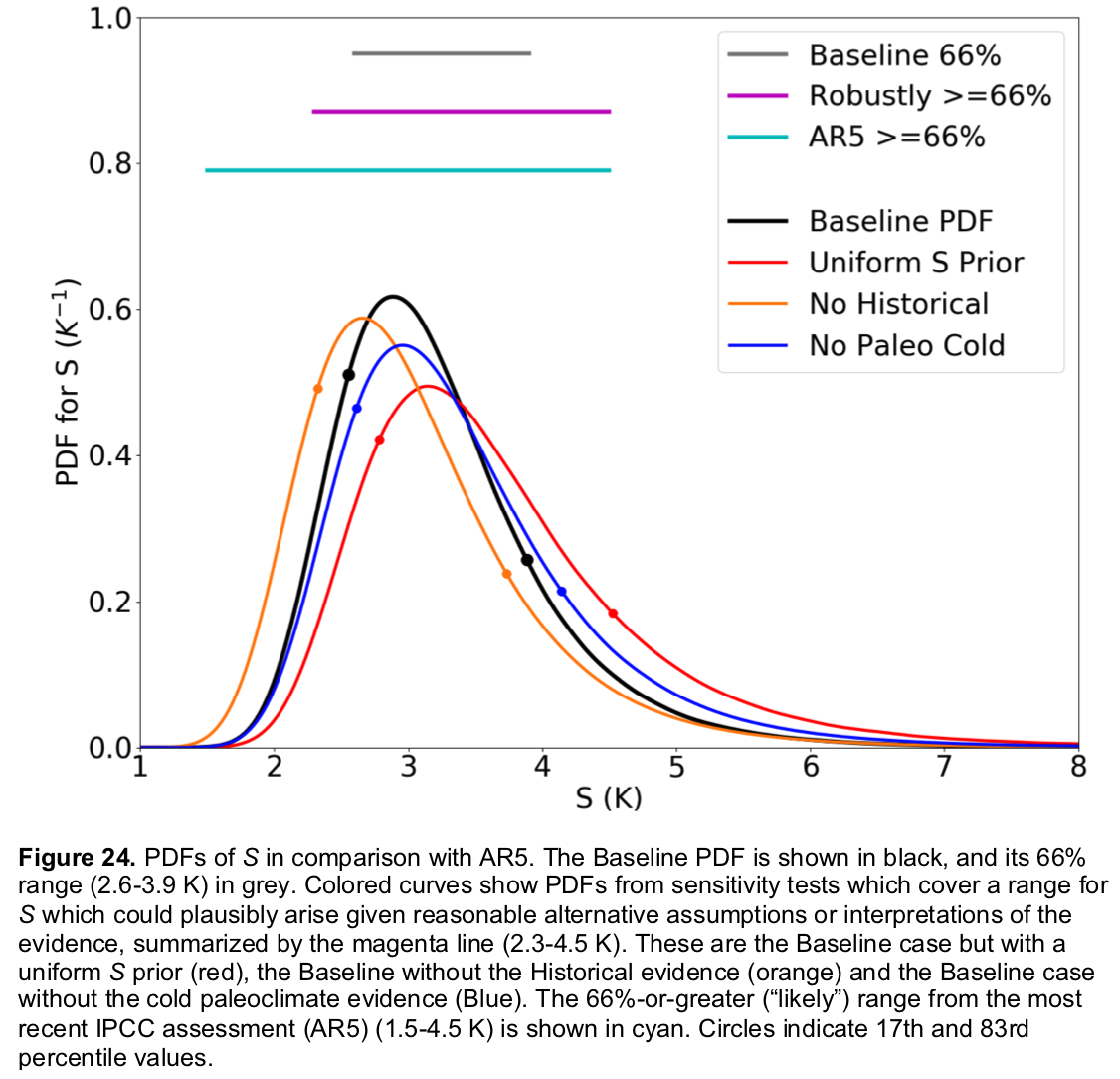After four years of work by 25 researchers, we've been able to narrow the range of future climate change. We find that equilibrium climate sensitivity is likely between 2.6C and 4.1C per doubling of CO2, compared to 1.5C to 4.5C in the last IPCC report https://www.sciencemag.org/news/2020/07/after-40-years-researchers-finally-see-earths-climate-destiny-more-clearly 1/
Climate change was always going to be a role of the dice given the complexity of the Earth's climate. What we've effectively done in this new study is found that rolling either a 1 or a 6 is a lot less likely than we previously thought. 2/10
Constraining the equilibrium climate sensitivity (ECS) has remained something of the Holy Grail in climate science, ever since Jules Charney suggested a possible range of 1.5 C to 4.5 C in his 1979 report. 3/10
Since then despite over 40 years of research and much improved understanding of atmospheric processes and many more detailed observations, this range has stubbornly refused to narrow (though Charney was probably too confident back in 1979!). 4/10
We find that there is a 66% chance effective climate sensitivity is between 2.6C and 3.9C per doubling CO2, and a 90% chance that its within 2.3C-4.7C. Effective sensitivity is slightly different from equilibrium sensitivity, where we get 2.6C-4.1C (66%) and 2.2-4.9C (90%). 5/10
We do this by combining three largely-independent lines of evidence from physical processes, the historical evidence and paleoclimate. By using all three we can produce a much narrower estimate than relying on any single line of evidence in isolation. 6/10
We also test the robustness of our results, and find that sensitivity remains bounded by 2.3-4.5C (66%) and 2.0-5.7C (90%) in the absence of any single line of evidence. 7/10
This means that both very low climate sensitivity (< 2C per doubling CO2) and very high sensitivity (> 5C) are much less likely the previously thought, though cannot be completely ruled out – particularly on the high end. 8/10
Still, given these results we should be reasonably skeptical of very high ECS estimates, such as those emerging from a subset of the new CMIP6 climate models, even if we can't rule them out. 9/10
For more details, see our post over at @CarbonBrief: https://www.carbonbrief.org/guest-post-why-low-end-climate-sensitivity-can-now-be-ruled-out 10/10
A non-paywalled version of the paper can be found here (and the version up at Reviews of Geophysics will be open access starting tomorrow): https://climateextremes.org.au/wp-content/uploads/2020/07/WCRP_ECS_Final_manuscript_2019RG000678R_FINAL_200720.pdf
RealClimate has a post with some good background on the new review: http://www.realclimate.org/index.php/archives/2020/07/climate-sensitivity-a-new-assessment/
And the Guardian: https://www.theguardian.com/environment/2020/jul/22/global-heating-study-narrows-range-of-probable-temperature-rises
Earther: https://earther.gizmodo.com/scientists-just-updated-one-of-the-most-important-clima-1844466199

 Read on Twitter
Read on Twitter




